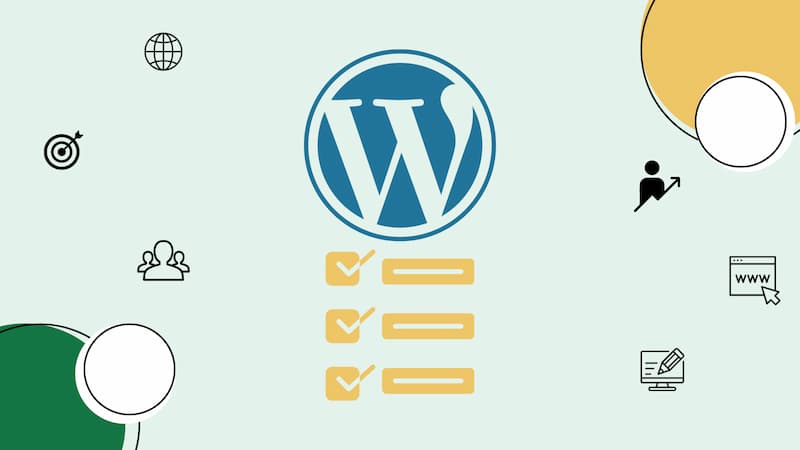When a page takes a long time to load, it disrupts the navigation of the user, who may prefer to go elsewhere to find the information they need. Furthermore, the speed of a site, especially on mobile, is something that Google considers very important and it will penalize your SEO if the speed of your site is not optimal. In this article, you will learn why, and how to improve your website’s loading speed to ensure the best possible SEO and an “SEO-friendly” site.
Why is it important to improve page speed?
From an SEO point of view
The loading speed of a website is considered important by Google’s robots. The better your site performs, the higher the positive impact it will have on your referencing. We don’t even take the time to type in our searches anymore because we live in an era where voice searches account for 1⁄3 of web searches. Therefore, search engines need to respond as quickly as possible. It is estimated that a site with a standard load time is able to load a page between 300ms and 500ms. The number of searches on cell phones continues to grow. It is necessary to optimize the loading time of web pages because cell phones do not have the same power as a computer.
From a user point of view
It is very frustrating for a user to browse a website that has trouble loading. It is estimated that a user will not wait more than 3 seconds.
In fact, the loading time is too long if it takes more than 600ms. The user will prefer to close the tab and will look for the information somewhere else.
How do you diagnose your website?
It is necessary to make an assessment of your website before you try to improve the loading time of your website.
Keyweo has selected 3 tools that can help you analyze the speed of a page. The result will determine if your site needs further optimization or if it is fast enough.
Google Pagespeed Insights
This tool is very easy to use and can estimate the load time on the desktop and mobile versions of your site. Be careful, a site may be very well optimized on desktop and slow on mobile.
Paste the URL of the page you want to analyze into the space provided. In less than a minute, you will get a detailed report of the areas of improvement on your page. Google will also give you a score between 1 and 100. If your site gets a score between 90 and 100, this is considered a good score. It is now up to you to analyze the Google report and make the necessary decisions to maximize your chances of a good position.
GTmetrix
GTmetrix works the same way as Google’s tool. You paste the URL of the page, and the tool provides it with a score and a diagnosis in a few seconds.
GTmetrix, on the other hand, is more visually appealing to users than Google Pagespeed Insight. Moreover, it prioritizes the actions that need to be taken to optimize your page load time. GTmetrix provides a more complete and in-depth analysis to help you determine optimization opportunities when it comes to technical aspects that need improvement.
Pingdom Tools
Pingdom Tools will complete your expertise.
This software does basically the same thing but it is interesting to compare the results between the two tests.
Pingdom Tool will show you 4 main criteria:
- The page weight
- The loading time
- The number of requests
- A performance index
In the same way as the Google tool, Pingdom Tool suggests areas of improvement for your website. It also gives you the response codes.
Although they are very similar, these three tools allow you to get different views of your website. It is up to you to make a correlation between the results and choose the best opportunities for improvement.
Now that we know what condition your website is in, we will give you a list of tips to optimize the load time of your web page.
Our tips to speed up the loading time of your web pages
Server-side
- Choose an efficient host.
There are a lot of web hosting companies on the market asking all different prices. There are two types of servers: dedicated and shared.
Shared servers are less efficient. As its name indicates, the servers are shared by several sites which can slow down the performance of your site.
This can happen if too many connections are made to other sites on the server. Prefer a server dedicated only to your site.
- Use a CDN (content delivery network)
A content delivery network (CDN) is a group of geographically dispersed servers that speed up the delivery of Web content by bringing it closer to users by having data centers temporarily store these files.
This results in reduced bandwidth costs and improved user experience.
- Use a DNS preload
The DNS brings traffic to a domain name. It translates your query “www.keyweo.com” into computer language. This makes it possible for all computers to understand each other.
It causes you to connect to this domain name and it links to the server on which it is hosted.
It is possible to preload the DNS so that the request will be answered faster.
- Use external storage platforms to avoid overloading the server
To optimize the loading of your pages, we recommend that you host heavy content on storage platforms that are separate from your website.
For example, if you want to present videos, preferably place them on platforms like Youtube etc.
Integrate the link to your page, the video is hosted on servers outside of yours, it will lighten the weight of your page.
On your website’s side
- Limit the use of Widget and Plugin
It is true that Widgets are elegant and make a site more attractive. However, they also take a long time to load because of their weight. Concentrate only on the essential widgets.
- Minimize the number of files
The lighter the content of your site, the faster your page will load. It is therefore very important to minimize the loading of all files on your website.
- Reduce HTML/CSS code
To display a web page, the browser must read the code version of your page to display it correctly.
The shorter the code is, the faster the response will be.
- Minimize HTTP requests and prioritize your content
Each line of code that needs to be read increases the loading time of your page. However, it is not useful to have your entire page loaded if the user is only using part of it.
For example, it is not interesting to load a drop-down menu until the user clicks on it.
There are several plugins to control this, depending on the software you use.
This is called “lazy loading”. You can find this on the internet if you type this in, together with the name of the software you are using.
- Reduce Javascript and CSS content
Some resources can take a long time to load because the browser downloads them while the page is still loading, which can be time-consuming.
Eliminate the resources that take too long to load.
Consider using waterlines to prioritize your content.
A list of tools that will help you improve your loading speed.
There are many tools to reduce the weight of files on your web pages. In this section, we will introduce you 6 tools that will allow you to improve the loading time of your pages. 3 of these tools have the direct purpose of speeding up your page. The other 3 are designed to reduce the weight of images as much as possible. We’ve found that many of our customers have already noticed this type of problem on their site, but didn’t know how to fix it.
3 tools to speed up a site
To use these tools, good computer skills are required. We advise you to approach an SEO agency in order to achieve improvement. Do not attempt anything if you do not have the necessary skills because it may damage the functioning of your website.
Gzip
This program allows you to compress files before they are sent to the web. The browser will, then, decompress these files when it is time to display the page. Compressing files increases the performance of your site and saves bandwidth.
Gzip is recognized by all browsers.
Find the link to access the Gzip program here
web.dev
Proposed by Google, this tool is designed for web developers. It is used to educate yourself but also to study your site as a case study. The advantage of this tool is that it provides you with articles containing improvement points about 1 Performance; 2 Accessibility; 3 Best practices; 4 SEO
We advise you to visit this page several times a year and make sure you stay in the green. The updates of the Google algorithm can impact your results.
Find the link to access Google web.dev here.
WP rocket
WP rocket allows you to apply file compression with Gzip and improve the speed of a WordPress site. It has exactly the same advantages as Gzip mentioned above.
In order to use WP rocket you have to make sure that two conditions are met:
- The server on which your site is hosted must have the gzencode function available in PHP.
- mod_deflate must be enabled on the server. Contact your web host if you don’t know how to do this.
- The required rules are placed in the configuration file of your .htaccess server, located at the root of your site.
Find the link to access WP rocket here
3 tools to optimize your photos
A large majority of people discover this problem when they check the SEO performance of a site. Unfortunately, they don’t know how to fix it in most cases. Moreover, optimizing images by compressing them usually involves a loss of quality. However, there are free online tools that can significantly reduce the weight of images without being noticeable to the naked eye.
In this article, we will compare 3 free image optimization tools and compare their efficiency. To make this comparative test, we will use the following image. Its original size is 499 Kb and its size is 1920 x 1268 px.
| TinyPNG | Squoosh | Compressor.io | |
| UX/UI | Fast and efficient | Very visual. Possibility to have a before and after. | Very visual. Possibility to have a before and after. |
| Accepted formats | JPG / PNG | JPG / PNG / Mozjpg / WebP | JPG / PNG / GIF / SVG |
| Downloading files | Up to 20 files at the same time | One for one | One for one |
| Maximum weight | 5MB | Up to 10MB
-Accepts heavier but the page will freeze- |
10MB |
| Registration | On your computer
On Dropbox |
On your computer | On your computer
On Dropbox |
| Choice of quality | Impossible | Possible | Impossible |
| Need for connection | Yes | No | No |
| Change the size | Impossible | Possible | Impossible |
| Developer | API | Stephane.Ly | |
| Size affected? | Non | Non | Non |
| Optimization | 57% | 56% | 39% |
| Final weight | 178,3 KB | 184KB | 253 KB |
| Quality | The quality of the photo has not been affected by the transformation. On the other hand, its weight is less than half of what it was before the compression. We can see that the texture of the flamingo’s plumage is unchanged and still contains all the detail. The colors have not been changed during the optimization either. We can conclude that TinyPNG does not interfere with the quality of the photos. The changes made are not visible. | With Squoosh, we notice that the details in the texture of the plumage are less visible than in the original photo. The head and the bill on the other hand have almost the same quality. The colors are also the same after the transformation. The advantage of this tool is that it allows us to vary the reduction of the image weight. | Compressor.io is the tool that best maintains the quality of the original image. You can hardly see the changes. The photo is extremely similar to the original. It maintains all the details and texture of the flamingo’s plumage. |
- Image TinyPNG
- Image Squoosh
- Image Compressor.io
To conclude,
Each tool was able to significantly reduce the weight of the original image. TinyPNG and Squoosh achieved over 55% optimization and Compressor.io 39%. All images retained their quality and colors. We could also see that the image texture is better than the TinyPNG version.
Optimizing images is one of the most important aspects of good SEO practices. When images are properly resized, they can improve the load time of a page, satisfying both Internet users and Google.
Optimizing load times is just one of the many things to consider for good SEO. For more tips, please check out the other SEO articles on our blog.











